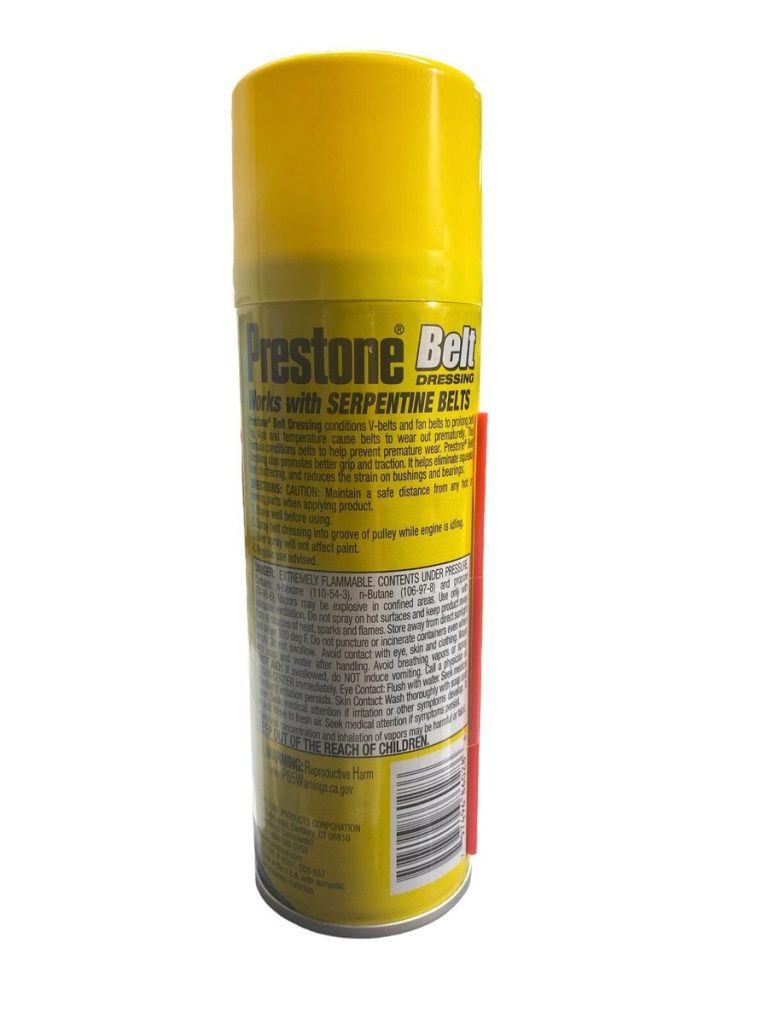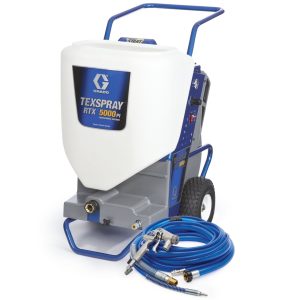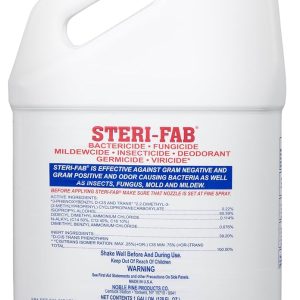
Vehicle maintenance involves countless components working in harmony, and among these, drive belts play a crucial role in keeping your engine running smoothly. When these belts start squeaking, slipping, or showing signs of wear, dressing spray emerges as a popular solution that many mechanics and car owners turn to. This automotive maintenance product promises to restore belt performance, eliminate annoying noises, and extend the lifespan of your rubber belts.
Understanding the proper use, benefits, and limitations of dressing spray is essential for anyone looking to maintain their vehicle’s belt system effectively. This comprehensive guide explores everything you need to know about this automotive maintenance solution, from its composition and application methods to its effectiveness across different belt types and vehicle systems.
What is Belt Dressing Spray?
Dressing spray is a specially formulated aerosol product designed to treat rubber belts in automotive and industrial applications. Belt conditioner is a specially formulated spray designed for use on rubber belts found in various machinery, including cars, trucks, lawn mowers, and tractors. These products typically contain a combination of synthetic lubricants, conditioning agents, and sometimes silicone compounds that work together to restore belt flexibility and improve grip.
The primary function of automotive dressing spray is to create a thin protective layer on the belt surface that reduces friction between the belt and pulley system. This coating helps prevent slippage, reduces heat buildup, and can temporarily restore some of the belt’s original gripping properties. Most dressing spray products are designed to penetrate the rubber material, providing conditioning benefits that can help prevent cracking and hardening over time.
Modern dressing spray formulations are typically silicone-based or contain synthetic polymers that provide both lubrication and conditioning properties. These advanced formulations are designed to be compatible with modern belt materials, including EPDM rubber and other synthetic compounds commonly used in today’s automotive applications.
How Does Belt Dressing Spray Work?
The effectiveness of dressing spray lies in its ability to address multiple belt-related issues simultaneously. When applied to a rubber belt, the spray creates a thin film that serves several purposes. First, it provides lubrication between the belt and pulley surfaces, reducing friction and the associated heat buildup that can cause belt degradation. This lubrication effect is particularly beneficial for belts that have become slightly glazed or hardened due to age and use.
Second, dressing spray works as a conditioning agent, penetrating the rubber material to restore some flexibility and grip. Can improve belt grip, which can increase belt and pulley efficiency and reduce slippage. Can reduce or eliminate squealing or chirping noises caused by belt slippage. Can extend the life of belts by reducing heat and friction. This conditioning effect is temporary but can provide immediate relief from squeaking and slipping issues.
The spray also creates a protective barrier that helps prevent moisture absorption and oxidation, two factors that contribute to belt deterioration. By forming this protective layer, dressing spray can help maintain belt integrity in various environmental conditions, from hot engine compartments to humid outdoor applications.
Benefits of Using Belt Dressing Spray
Immediate Noise Reduction
One of the most noticeable benefits of dressing spray is its ability to eliminate squeaking and chirping noises almost instantly. Belt noise typically occurs when there’s insufficient grip between the belt and pulley surfaces, causing the belt to slip slightly during operation. The lubricating properties of dressing spray help restore proper belt-to-pulley contact, eliminating the vibrations that create these annoying sounds.
Improved Belt Performance
Dressing spray can significantly improve belt performance by restoring grip and reducing slippage. Can improve belt and pulley efficiency, which can reduce energy costs and increase fuel efficiency. Can reduce or eliminate squealing or chirping noises, which can save money on repairs caused by belt damage. This improved performance translates to better power transfer efficiency, which can positively impact fuel economy and overall vehicle performance.
Extended Belt Life
Regular use of dressing spray can help extend the lifespan of rubber belts by preventing premature wear and cracking. Drive belt dressing helps to extend the life of the drive belt. The conditioning agents in the spray help maintain rubber flexibility, while the protective coating helps prevent environmental damage from heat, moisture, and ozone exposure.
Cost-Effective Maintenance
Compared to belt replacement costs, dressing spray offers a cost-effective maintenance solution. A single can of quality dressing spray typically costs between $5-15 and can treat multiple belts several times, making it an economical choice for regular maintenance.
Types of Belt Dressing Spray
Silicone-Based Formulations
Silicone-based dressing spray products are among the most common types available. These formulations provide excellent lubrication and water resistance, making them suitable for outdoor applications and environments with high moisture levels. Silicone-based sprays typically offer longer-lasting protection but may attract dirt and debris over time.
Synthetic Polymer Blends
Advanced dressing spray products use synthetic polymer blends that provide superior conditioning properties without the drawbacks of traditional silicone formulations. These products often offer better dirt and debris resistance while maintaining excellent lubrication and conditioning benefits.
Food-Grade Formulations
Food-grade adhesive spray for drive and conveyor belts are available for applications in food processing facilities and other environments where contamination concerns exist. These specialized dressing spray products meet strict regulatory requirements while providing the same performance benefits as standard formulations.
Application Methods and Best Practices
Proper Application Technique
Applying dressing spray correctly is crucial for achieving optimal results. Begin by ensuring the engine is off and the belt system is cool to the touch. Clean the belt and pulley surfaces of any debris, oil, or existing dressing residue. Shake the dressing spray can thoroughly before use, as settling can affect product performance.
Hold the spray can approximately 6-8 inches from the belt surface and apply a light, even coating while slowly rotating the engine by hand or using the starter motor for brief intervals. Avoid over-application, as excess product can attract dirt and may cause the belt to slip initially until the excess is worked off.
Safety Considerations
Always wear appropriate personal protective equipment when using dressing spray, including safety glasses and gloves. Ensure adequate ventilation in the work area, as most products contain solvents that can be harmful if inhaled in concentrated amounts. Never apply dressing spray to a running engine, as this can be extremely dangerous and may cause serious injury.
Timing and Frequency
The best time to apply dressing spray is during regular maintenance intervals or when belt noise first becomes apparent. Most manufacturers recommend reapplication every 3,000-5,000 miles or as needed based on operating conditions. However, frequent application may indicate underlying belt or pulley issues that require professional attention.
Common Belt Types and Compatibility
Serpentine Belts
Modern vehicles predominantly use serpentine belts, which are single, continuous belts that drive multiple accessories. Dressing spray can be effective on serpentine belts, but application should be done carefully to avoid affecting the belt’s multi-ribbed design. Some mechanics debate the use of dressing spray on serpentine belts, as these are designed to operate without additional lubrication.
V-Belts
Traditional V-belts, still found in many older vehicles and industrial applications, generally respond well to dressing spray treatment. The wedge shape of V-belts makes them particularly susceptible to slippage issues, which dressing spray can effectively address.
Timing Belts
Never use dressing spray on timing belts, as these require precise tension and grip characteristics that can be compromised by any external treatment. Timing belts are designed to operate dry and should only be replaced when showing signs of wear.
Troubleshooting Common Issues
Persistent Squeaking
If dressing spray doesn’t eliminate squeaking, the issue may be related to improper belt tension, misaligned pulleys, or worn belt surfaces. Check belt tension according to manufacturer specifications and inspect pulleys for wear or damage. Persistent noise after proper dressing spray application often indicates the need for belt replacement.
Reduced Effectiveness Over Time
If dressing spray seems less effective with repeated use, the belt may have reached the end of its service life. Additionally, over-application can lead to product buildup that actually reduces belt grip. Clean the belt thoroughly and apply dressing spray sparingly for best results.
Attracting Dirt and Debris
Some dressing spray formulations may attract dirt and debris, particularly in dusty environments. Choose products specifically designed for your operating conditions, and consider more frequent cleaning intervals if contamination becomes an issue.
Professional vs. DIY Application
When to Seek Professional Help
While dressing spray application is generally straightforward, certain situations warrant professional attention. Complex belt routing, multiple belt systems, or persistent problems after treatment may require professional diagnosis. Additionally, if you’re uncomfortable working around moving engine components, professional application ensures safety and proper technique.
DIY Application Benefits
For simple belt systems and routine maintenance, DIY dressing spray application can be cost-effective and convenient. Most car owners can safely apply dressing spray with basic tools and proper safety precautions. Regular DIY application can help maintain belt performance between professional service intervals.
Environmental Considerations
Disposal and Environmental Impact
Proper disposal of dressing spray containers is important for environmental protection. Empty containers can typically be recycled with other aerosol products, while partially full containers may require hazardous waste disposal. Check local regulations for specific disposal requirements in your area.
Alternative Eco-Friendly Options
Some manufacturers offer eco-friendly dressing spray formulations that reduce environmental impact while maintaining performance. These products may use biodegradable bases and reduced VOC content, making them suitable for environmentally conscious consumers.
Cost Analysis and Value Proposition
Initial Investment vs. Long-Term Savings
The cost of dressing spray is minimal compared to belt replacement expenses. A typical dressing spray can costs $5-15 and can treat multiple belts several times. In contrast, professional belt replacement can cost $50-200 depending on the vehicle and belt type. Regular use of dressing spray can potentially extend belt life by 20-30%, providing significant cost savings over time.
Comparing Product Options
Dressing spray products vary in price and performance characteristics. Premium formulations may cost 2-3 times more than basic products but often provide superior longevity and performance. Consider your specific application requirements and operating conditions when selecting a product.
Maintenance Schedule and Integration
Incorporating Belt Dressing into Routine Maintenance
Dressing spray application should be integrated into regular vehicle maintenance schedules. Many mechanics recommend application during oil changes or other routine service intervals. This approach ensures consistent belt care and helps identify potential issues before they become serious problems.
Seasonal Considerations
Weather conditions can affect belt performance and dressing spray effectiveness. Cold weather may require more frequent application, as rubber belts become stiffer and more prone to slippage. Hot weather can accelerate belt aging, making regular dressing spray application more beneficial for maintaining belt flexibility.
Future Developments and Innovations
Advanced Formulations
The automotive industry continues to develop improved dressing spray formulations that address traditional limitations. New products feature enhanced dirt resistance, longer-lasting protection, and better compatibility with modern belt materials. These innovations promise to make dressing spray even more effective and convenient to use.
Smart Application Systems
Some manufacturers are developing smart application systems that help users apply dressing spray more precisely and efficiently. These systems may include built-in measuring devices, improved spray patterns, and integration with diagnostic tools to optimize application timing and frequency.
Frequently Asked Questions About Belt Dressing Spray
What is belt dressing spray used for?
Dressing spray is used to eliminate squeaking, reduce belt slippage, and extend the life of rubber drive belts in automotive and industrial applications. It provides lubrication and conditioning to restore belt performance.
How often should I apply belt dressing spray?
Most manufacturers recommend applying dressing spray every 3,000-5,000 miles or as needed when belt noise occurs. However, frequent application may indicate underlying belt or pulley issues requiring professional attention.
Can belt dressing spray damage my belts?
When used properly, dressing spray should not damage belts. However, over-application or using incompatible products can potentially cause issues. Always follow manufacturer instructions and use products designed for your specific belt type.
Is belt dressing spray safe for serpentine belts?
Modern dressing spray formulations are generally safe for serpentine belts when used as directed. However, some mechanics prefer to avoid dressing on serpentine belts, as they’re designed to operate without additional lubrication.
How long does belt dressing spray last?
The effectiveness of dressing spray typically lasts 3,000-5,000 miles under normal operating conditions. Factors such as driving conditions, belt age, and environmental exposure can affect longevity.
Can I use belt dressing spray on timing belts?
No, never use dressing spray on timing belts. These belts require precise tension and grip characteristics that can be compromised by any external treatment. Timing belts should only be replaced when showing signs of wear.
What should I do if belt dressing spray doesn’t stop the squeaking?
If dressing spray doesn’t eliminate squeaking, check belt tension and pulley alignment. Persistent noise may indicate the need for belt replacement or professional diagnosis of underlying issues.
For more information about automotive maintenance products, check out our guide on ethyl chloride spray and other essential automotive chemicals.
Ready to eliminate belt noise and improve performance? Browse our selection of premium dressing spray products and find the perfect solution for your automotive maintenance needs. Visit our belt dressing spray product page today!





